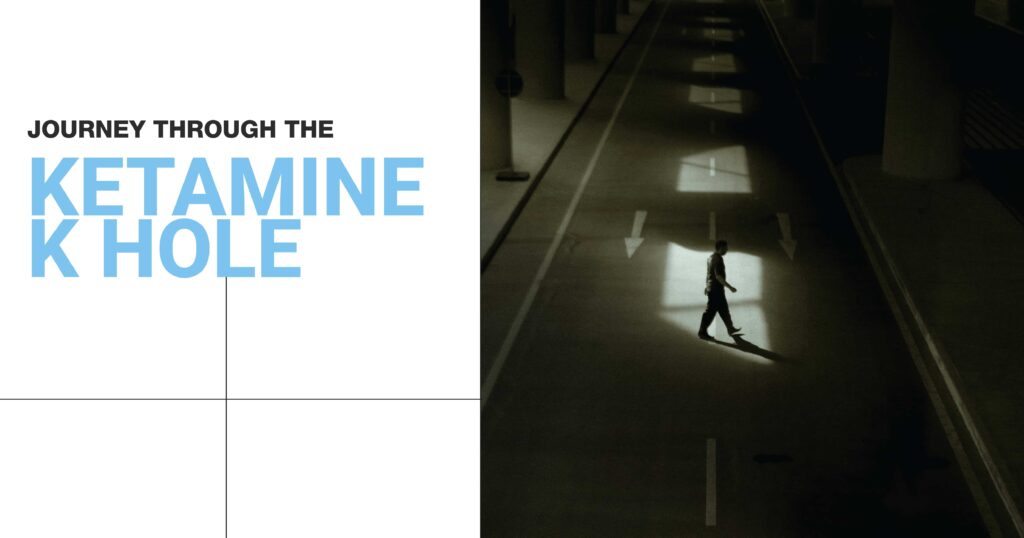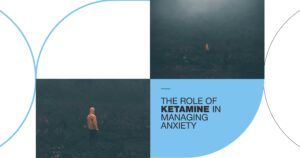For decades, ketamine has been known primarily as an anesthetic. But beyond its medical uses lies a mysterious, often misunderstood phenomenon known as the ketamine K hole. This deeply dissociative, sometimes psychedelic state blurs the boundaries between self and reality. Some describe it as floating outside their body. Others call it a journey through inner space, a voyage inward that challenges perception and expands consciousness.
Whether pursued recreationally, accidentally encountered during high doses, or explored under clinical supervision, the K-hole remains one of the most intense experiences ketamine can produce. In this article, we’ll explore what happens inside this altered state, its risks and therapeutic possibilities, and how it compares to other psychedelic journeys.
Understanding the Ketamine K Hole
The “K hole” refers to a state of profound dissociation – a separation of mind from body and perception from reality – induced by high doses of ketamine. It is both feared and revered: some see it as a terrifying loss of control, while others view it as an opportunity for mind exploration and deep introspection.
Defining the K Hole and Its Dissociative Effects
At high doses, ketamine’s influence extends beyond sedation and pain relief. It disrupts how the brain processes sensory information, leading to an altered state of consciousness where familiar boundaries dissolve.
People who enter a ketamine K hole often report:
- A sense of detachment from the physical body (out-of-body experience)
- Altered sensory perception, including distorted sound and vision
- Disconnection from time, space, and self
- Intense visual hallucinations and dreamlike imagery
- Deep introspective thought or spiritual-like revelations
Some describe the experience as a “reset” for the mind, while others compare it to floating through a different dimension.
The Science Behind Ketamine’s Hallucinogenic Properties
Ketamine works primarily as an NMDA receptor antagonist, disrupting communication between neurons in the brain’s glutamate system. This interruption leads to profound changes in how the brain organizes sensory input, memory, and identity.
- Sensory dissociation: Signals from the senses reach the brain but are processed in unusual ways, altering perception.
- Altered consciousness: Neural networks that construct reality shift, leading to the sensation of leaving one’s body or existing outside time.
- Enhanced introspection: Reduced external awareness allows deeper focus on inner thoughts, emotions, and memories.

Risks and Safety Concerns
While the K-hole can be profoundly transformative, it’s not without significant risks – particularly when ketamine is used unsupervised or recreationally.
Potential Dangers Associated With K Holes
- Loss of bodily awareness: People in a K-hole may not feel pain or danger, increasing the risk of accidents.
- Psychological distress: Intense dissociation can trigger panic, confusion, or paranoia.
- Nausea and vomiting: Common side effects that can become dangerous if consciousness is impaired.
- Potential for misuse: Repeated recreational use may lead to dependence or mental health issues.
In a clinical setting, ketamine is carefully monitored to minimize these risks. Outside of one, the same experience can become frightening or hazardous.
Factors That Influence the Duration and Intensity
The length and depth of a ketamine K-hole can vary significantly based on several factors:
- Dosage: Higher doses increase the likelihood of entering a K hole.
- Method of administration: Intravenous or intramuscular doses produce faster, more intense effects than oral use.
- Body weight and metabolism: Individual physiology affects how ketamine is processed.
- Set and setting: Emotional state and environment heavily influence whether the experience feels enlightening or overwhelming.
Comparing K Hole Experiences to Other Hallucinogens
The psychedelic effects of ketamine differ from classic hallucinogens like LSD, psilocybin, or DMT. Rather than enhancing sensory input, ketamine disrupts it – creating an inward-focused, introspective journey rather than a colorful outward one.
| Substance | Primary Experience | Onset & Duration | Unique Feature |
| Ketamine | Dissociative, introspective, detached from reality | 5–15 min onset, lasts 30–90 min | Profound sense of detachment and body dissociation |
| LSD | Visual, emotional, expansive | 30–60 min onset, lasts 8–12 hrs | Heightened sensory detail and emotional amplification |
| Psilocybin (Mushrooms) | Spiritual, visual, connective | 30–60 min onset, lasts 4–6 hrs | Deep emotional insight and nature-connectedness |
| DMT | Intense, immersive, otherworldly | 1–2 min onset, lasts 10–20 min | Rapid, overwhelming entry into altered consciousness |
The Role of Set and Setting
Just like with other psychedelics, the set and setting – your mindset and physical environment – play a crucial role in shaping the K-hole experience.
- Set (mindset): Entering the experience with fear or anxiety may lead to distressing hallucinations. Approaching it with openness and curiosity often leads to deeper insight.
- Setting (environment): A quiet, safe, and supportive space reduces the risk of panic and enhances the likelihood of a meaningful experience.
Harm Reduction Strategies
If someone is considering exploring high-dose ketamine experiences – particularly outside a clinical context – harm reduction is critical. These precautions help minimize risks and maximize safety:
- Never use alone: Have a trusted person present who can monitor safety.
- Control the environment: Quiet, familiar spaces reduce disorientation.
- Avoid mixing substances: Combining ketamine with alcohol or other drugs increases risk.
- Stay hydrated and rest: Proper self-care supports recovery after the experience.
- Start low and go slow: Lower doses reduce the chance of overwhelming dissociation.
Learn Clinical Perspectives and Therapeutic Potential at Clear Mind Treatment
At Clear Mind Treatment, we understand both the risks and the potential of ketamine therapy. When guided by trained clinicians, even profound dissociative states like the ketamine K hole can become opportunities for deep introspection, emotional release, and healing.
Our clinical approach combines science-backed protocols with therapeutic integration, helping individuals use altered states of consciousness to support long-term mental health goals. Whether you’re exploring ketamine for depression, PTSD, or personal growth, we’re here to guide you every step of the way.

FAQs
What is a dissociative experience in a ketamine K-hole, and how does it affect sensory perception?
A dissociative experience is a state where the mind detaches from the body, leading to altered sensory input and a distorted sense of time and space. People often feel as though they are observing themselves from outside their bodies.
How do the psychedelic effects of a K-hole alter consciousness and contribute to visual hallucinations?
Ketamine disrupts normal brain communication, causing the brain to reinterpret sensory data. This can lead to dreamlike visions, vivid imagery, and profound shifts in consciousness.
Can the introspective journey during a K-hole offer therapeutic potential for mind exploration?
Yes, many report deep psychological insights and emotional breakthroughs during the experience. In clinical contexts, this introspection can support therapy and mental health treatment.
How does the altered consciousness experienced during a K-hole compare to other hallucinogen-induced states?
It tends to be more dissociative and inward-focused than substances like LSD or psilocybin. Instead of amplifying sensory input, it often dissolves the sense of self entirely.
What are the implications of sensory perception changes during a K-hole, and how do they impact the overall experience?
Changes in sensory processing can make the experience feel surreal, timeless, and deeply introspective. These alterations shape how individuals interpret their inner world during the journey.





